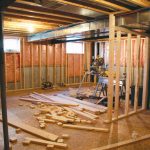We all know that the air we breathe contains some harmful gases. But what you might not know is that these gases can be found in your home! And if they’re around, it’s crucial to find them and make sure there are safe levels of exposure. Let’s look at how to detect these harmful gases and what you can do about them.
Harmful types of gas around the home
Radon
Radon is a radioactive gas that comes from the ground. It gets into your home by seeping through cracks in the foundation or gaps around pipes or wires. Radon becomes trapped in your home, and you can’t see it, smell it, or taste it. The only way to know if there’s radon in your home is with special detectors that measure the amount of radon gas in the air.
It’s harmful to your health because it can cause cancer. Radon gas can be incredibly detrimental to smokers and people exposed to secondhand smoke because it increases the risk of lung cancer. If you think you live in an area with high radon levels, you can have radon tested at home. Inspectors can help you find out if you have a radon problem and recommend solutions.
Ammonia
Ammonia is a gas that’s made up of nitrogen and hydrogen. It’s colorless, but it has a strong smell. Ammonia can irritate your nose, throat, and eyes. It can also make you dizzy or sleepy. Ammonia is found in many household products, like cleaners, pesticides, and fertilizers.
If you’re exposed to high levels of ammonia for a long time, it can damage your lungs. Ammonia can also be dangerous if you breathe it in while pregnant because it can harm the baby. It can also be hazardous to people with chronic lung disease or asthma, worsening their conditions.
You can lower your risk of exposure to ammonia by reading the labels on products before you buy them. Be sure to put fertilizers, pesticides, and other harmful chemicals in a sealed container outside of your home.
Formaldehyde Gas
Formaldehyde is a colorless, strong-smelling gas. It’s also found in some household products like paints, varnishes, and plastic materials. Formaldehyde can make you sick if you breathe it for long periods or get it on your skin or in your eyes.
High levels of formaldehyde gas can make breathing difficult. This is more of an issue if you’re already sick with something like chronic obstructive pulmonary disease (COPD). Exposure to high levels of formaldehyde during pregnancy may increase the baby’s risk of congenital disabilities like cleft lip or palate.
If you notice that your home has more than the average cases of coughs, sneezes, or headaches, it might be a sign that you have high levels of formaldehyde. You can test your home for formaldehyde with a special detector.
Carbon Monoxide
Carbon monoxide is a gas that you can’t see, smell, or taste. It’s made when fuel (like gasoline, wood, coal, or natural gas) doesn’t burn completely. Carbon monoxide can cause headaches, dizziness, nausea, and vomiting. It can also make you feel tired and short of breath.
If you’re exposed to high levels of carbon monoxide for a long time, it can damage your heart, brain, and other organs. It can also cause death. You can protect yourself from carbon monoxide poisoning by installing a carbon monoxide detector in your home.
Methane
Methane is a gas that you can’t see, smell, or taste. It’s made when organic materials like manure and plant matter decompose. Methane can cause headaches, dizziness, nausea, and vomiting. It can also make you feel tired and short of breath. It can also cause an explosion if you let too much build up in your home because it’s highly flammable.
If you’re exposed to high levels of methane for a long time, it can damage your heart, brain, and other organs. It can also cause death. You can protect yourself from methane poisoning by installing a methane detector in your home.
Warning Signs of Toxic Gas Poisoning

Toxic gas poisoning is a serious issue and can be deadly. If you think you or someone else might be experiencing the symptoms of toxic gas poisoning, get out of the area immediately and call 911.
Symptoms can include headaches, dizziness, nausea, and vomiting. It can also make you feel tired and short of breath. Other symptoms of gas toxicity can include chest pain and cramps. It may also cause death. This is why it’s so important to know how to protect yourself and others from toxic gas poisoning.
How to Ensure You Eliminate Toxic Gases
There are a few ways to ensure that you have no toxic gas in your home. One way is to install toxic gas detectors and alarms in your home. This will give you an early warning if there is a problem. You can also have your home tested for gas leaks. If you find a gas leak, a professional can have it fixed.
You can also take steps to prevent exposure to harmful gases. Be sure to read the labels on products before you buy. You can also check for warning signs of gas toxicity in yourself or your family members.
If you notice any of the symptoms of gas poisoning, seek medical help immediately.










